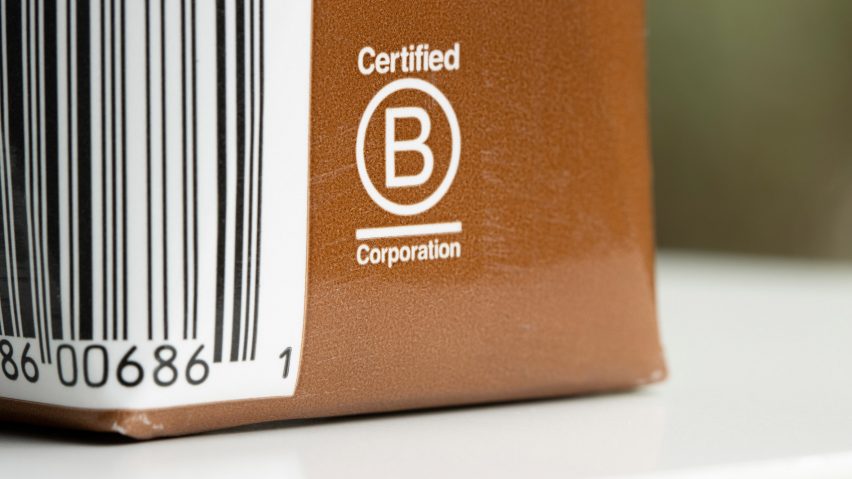Architects and designers should become B Corp certified so they can benchmark their environmental and social progress against companies in other sectors, says Peter Fisher, director at architecture studio Bennetts Associates, which has recently been certified.
B Corp certification suddenly seems to be everywhere and that is no bad thing. Environmental and social governance are becoming increasingly significant for businesses in every sector and it is essential to have a level of verification for frequent often vague, ethical claims.
Public pronouncements around environmental and social responsibility are the easy bit and frequently originate from creative industries still accepting long hours and exploitation of junior staff.
Key to making progress on environmental and social standards is to start tracking, recording and benchmarking
Meaningful change is difficult and architects and designers are no less prone to making unverified claims than other businesses and industries.
As with many things, key to making progress on environmental and social standards is to start tracking, recording and benchmarking quantifiable metrics. Going down the B Corp route is one way to do this.
The certification not only evaluates a product or service, but also the positive impact of the company behind it. The process is rigorous, employing its B Impact Assessment tool to evaluate how a company's business model impacts five categories: workers, community, environment, customers and governance.
According to B Lab, the US non-profit organisation behind the certification, an average company in the UK would score around 50 on the assessment, whereas to become B Corp certified requires a score of 80 or more. Following certification, firms are then reassessed every three years.
Our journey has allowed us to evaluate where we are internally and compare our impact with organisations across many different industries
At Bennetts Associates, we recently became one of a handful of UK architecture studios to become B Corp certified. Our journey has allowed us to evaluate where we are internally and compare our impact with other organisations across many different industries.
Our initial reason for looking into B Corp status came by chance, when one of our associate directors bought a Patagonia jacket and wondered what being a B Corp meant and whether it was something we could do.
We have endeavoured to operate with a strong environmental and social ethos since our foundation, but have not had this benchmarked against others before.
So, we had a sense of how we are doing within the context of architecture and design, but not where our industry itself sits. As it happens, the highest-scoring B Corp in the world is a small architect and solar energy firm called South Mountain Company in the US.
It is definitely a marathon, not a sprint
The conversion to B Corp status also takes time; about two years from making the application to become certified. The process is rigorous and a company has no B Corp status until it is certified, beware of those claiming otherwise.
It is definitely a marathon, not a sprint, with one of the greatest challenges for us involving the large amount of information that had to be gathered. That said, we were able to build on work we'd already done and it helped that we had been reporting our impacts using the Global Reporting Initiative framework since 2012.
B Corp certification evaluates numerous factors. We scored very highly in the “workers” and “environment” categories, due in part to our being 100 per cent employee-owned, and our work on climate change both within the practice and on projects. At the same time, we also did well in lots of areas that we are perhaps less well known for, such as community engagement. Interestingly, the built environment generally doesn't do well in the customers' section, which merits reflection.
The assessment has something called the Impact Business Model sections, which are questions applicable to specific sectors. For architects and designers, there are a surprising number of questions that relate to the type of work we do (well connected, socially and regeneration-focussed schemes score well), and questions relating to process and outcomes ( for example, the percentage of projects meeting 2030 targets and including LCAs). Some of the questions are US-centric, but we found it very easy to use UK equivalents for most things, other than water management.
All told, the process of becoming B Corp certified has been long, but worthwhile
It is also worth understanding that B Corp is American in origin. As a European organization, we were awarded quite a few credits for things like healthcare, holiday, fair pay, etc., which are basic minimums in the UK.
All told, the process of becoming B Corp certified has been long, but worthwhile. We've learned a lot in the process and have revised targets to further improve our score when reassessed in three years' time.
Our next step is to sit down and put a list together of targets, which will mean a mixture of maintaining progress in some areas and pushing hard on a lot of others, which is incredibly exciting, and to be honest is something we might not have been doing as quickly without the B Corp incentive.
With so much emphasis being placed on environmental and social responsibility clearly, it makes sense to have a way of benchmarking. The rise of B Corp certification will induce more rigour and deter those companies who too often make unverified, claims in relation to these globally important standards.
Peter Fisher is director at architecture practice Bennetts Associates. Since joining the practice in 2001, Peter has taken a strong interest in architecture which encompasses environmental design, having studied both disciplines. He has taught, lectured and written widely on the subject of architecture and sustainability.

